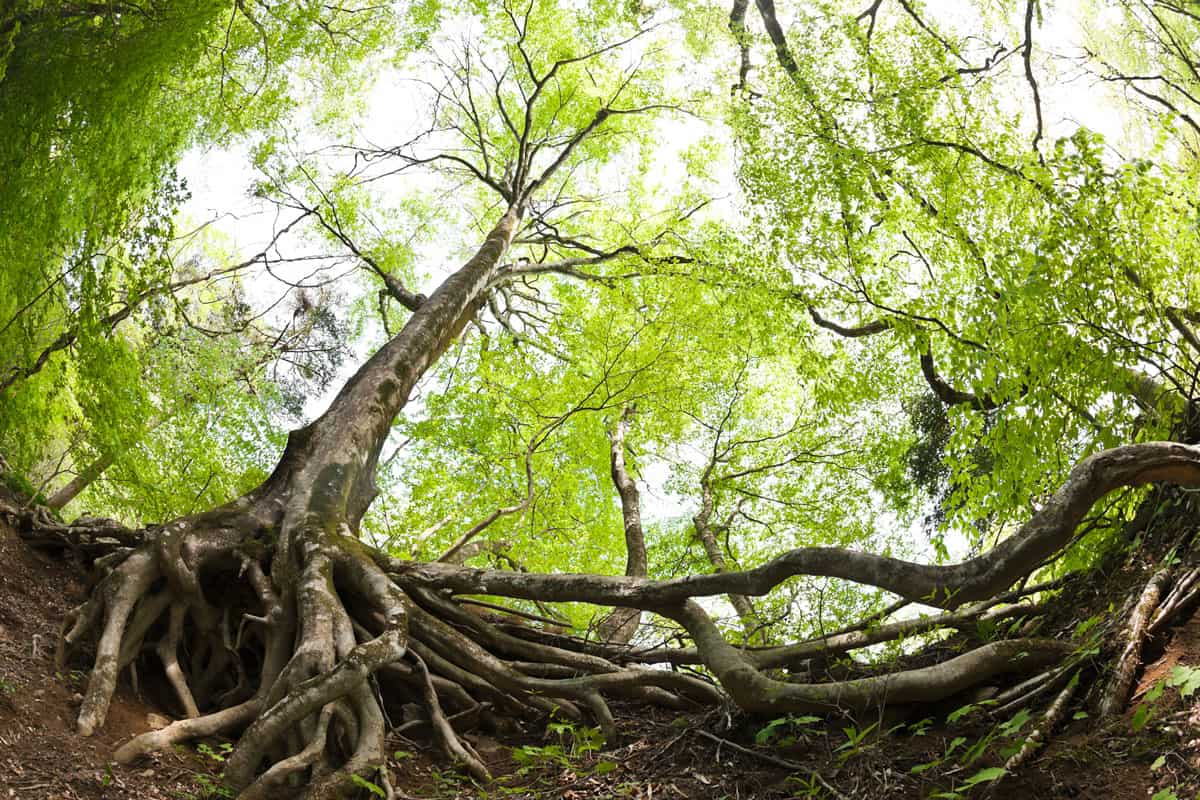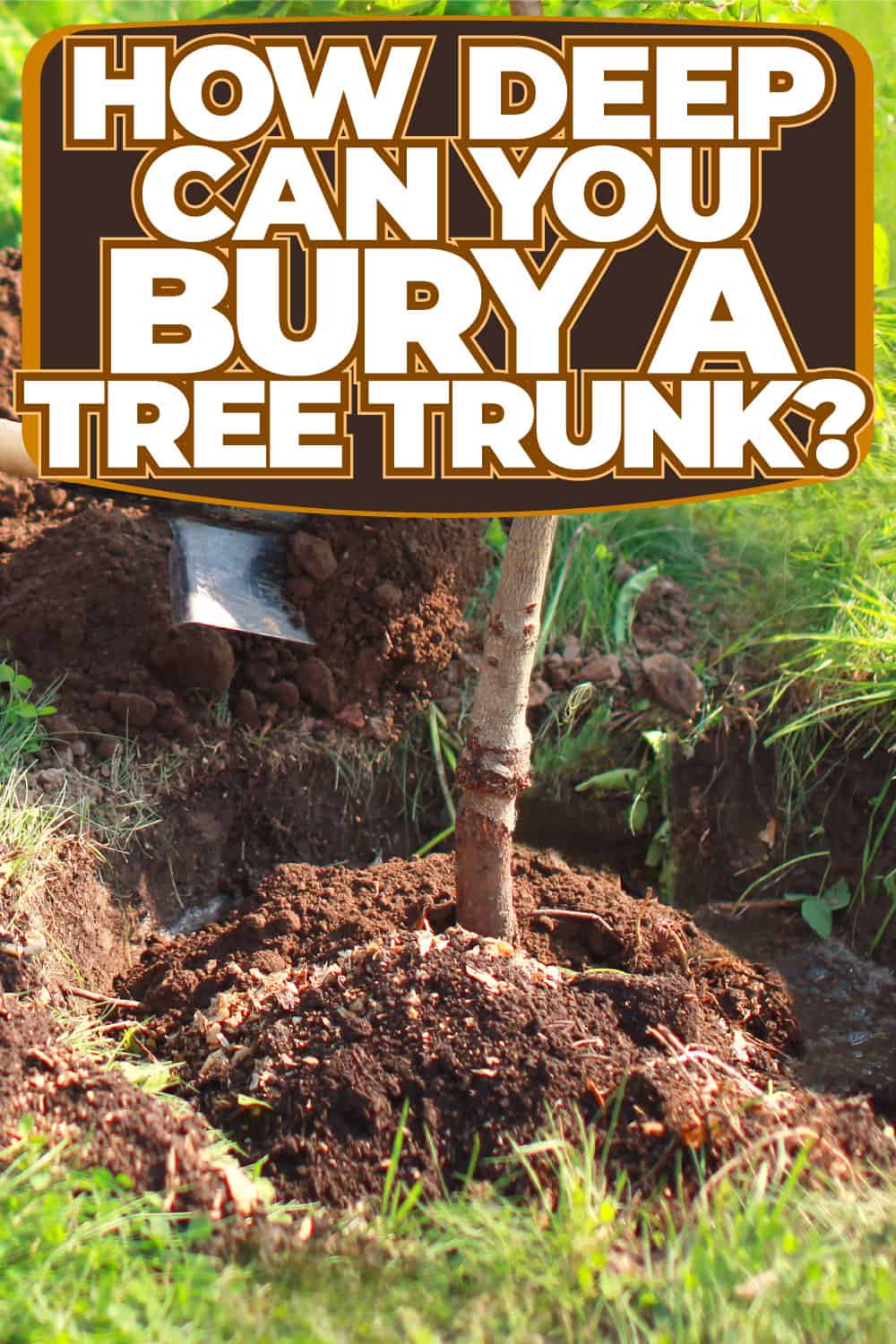Buying a full-grown tree or replanting a tree should be done with careful planning. With this in mind, you might wonder about the proper way to plant a tree without damaging or killing it. Do you plant the tree deep enough to stand and not lean over? But did you know that trees planted too deep can cause root decay? Don't worry, we have heard you and found the information to help you bury a tree trunk properly.
A tree trunk should be buried below the root flare. This part of the tree has to remain above ground to get the nutrients the tree needs. We have lined up the dos and don'ts in planting a tree.
- Tree flare should stay exposed
- The tree should not be planted too deep
- Mulch should not be a mound
- Dig only up to the extent of the root
- Don't over-compact the soil
These tips will help ensure the tree planted will thrive. Read on further to get more insights on using these tips for your tree planting project.

Do's and Don'ts of Burying a Tree Trunk
There are a lot of misconceptions surrounding tree planting. You may have heard that trees have to be planted buring the roots and even part of the tree. Making the tree look like a telephone post will make it sturdy and not lean over. Trees need a lot of water especialy during the summer.

However, these are some of the causes that can kill a tree. Here are the tips to dispel these misconceptions.
1. Tree flare should stay exposed
A tree flare or a root flare is the anchor of the trunk. It is the broader part at the bottom of the tree where roots spread out. This is the start of the root system.
This part of the tree should be exposed as it can rot if buried under the soil. It needs air to stay healthy. But you won't get this burying it deep down where the soil has no air pockets.
Added to this, the tree will settle a bit with the soil after it has been planted. So, plant the tree a little higher for the tree flare not to rot.
2. Tree Should Not be Planted Too Deep
Trees planted deeply can rot because of the soil moisture. It can also cause leaves to be smaller, fall off, or turn yellow.
Deep planting can also slow the tree's growth; tips die, and bark will start to split. Avoid this to keep the tree healthy. An unhealthy tree is prone to pest infestations and diseases caused by fungus and bacteria.
3. Mulch Should Not Be a Mound
After planting the tree, it is recommended to cover the soil with mulch. This keeps the mositure in the soil as well as prevents weed growth and diseases.
Mulch can be plant debris like leaves that have fallen on the ground. Other options are manure, compost and wood chips.

Check this natural cedar mulch on Amazon.
However, too much mulch is also not good for the tree. Don't make a mound on the ground. Maintain the depth of mulch only up to 3 inches on top of the soil. More than this will cause suffocation because oxygen and water will not reach the roots. Too much mulch will also cause a tree flare to rot and can kill the tree eventually.
4. Dig Only Up to the Extent of the Root
When digging a hole for planting a tree, the diameter should be able to accommodate the extent of the root. Be careful not to bend the roots as this will grow in a circle. This will result in girdling of the tree.
Girdling is a way of killing a tree without cutting it. This causes the roots to go around the trunk and strangle it. When this happens, it will prevent the flow of nutrients needed by the tree to thrive.
5. Don't Over-compact the Soil
Watering the plants can cause soil compaction over time. When soil particles are pressed together, water cannot travel to the roots properly. It will also not drain well, making the soil retain moisture. Too much moisture can cause the root to rot.
Other Factors for Tree Planting

When planting a tree, consider when it is a good time to do it. Also, trees need time to adjust to their new environment.
Best Time to Plant a Tree
Planting a tree can be done any time of the year. However, the best time will be spring or fall time.
Springtime is when trees can photosynthesize and develop roots. When spring comes, we get more sunlight. Photosynthesis needs sunlight, carbon dioxide, and water to produce food for the plant. Roots will develop more when plants get nutrients.
This will also give you an early start in the growing season. It provides time for the tree to settle and build a root system before the winter arrives. Also, spring is when there will be more variety and species of trees to choose from.
In fall, trees start to lose leaves. This makes it focus more on root growth. Also, a cooler temperature means the soil is warmer and has more moisture. These conditions are ideal for planting trees.
Transplant Shock
When a tree is moved from one place to another, it experiences transplant shock. This refers to the stress the tree goes through after it has been transplanted. If this happens, the tree's growth slows down. Some signs are yellowing, wilting, or shedding of the leaves. Notice also when the tree stops bearing fruit or is not flowering.
A transplant shock can last from 2 weeks up to 5 years. The length of the tree's recovery depends on how you care for it as it adjusts to its new environment. Avoid disturbing the roots and keep the soil moist but not wet.
Landscaping the Area Around the Tree

It is best to have some exposed roots to encourage tree growth. Can you cover the roots and soil after planting the tree? Yes, and mulch is a good option. There are other options, though, if you want to do some landscaping.
Soil with Compost
Soil mixed with compost is one option. Compost will give more nutrients to your tree. Do this over several weeks to allow the tree to adjust and absorb the nutrients.
Groundcover plants
To make the area aesthetically appealing, you may want to add groundcover plants. These flowering plants don't grow in height but spread to create a dense cover. Your garden will surely have more color. Also, these plants do not require much sunlight. They will thrive in shaded areas like under the trees.
Can gravel be placed over exposed tree roots?
For landscaping purposes, an alternative to cover the soil is gravel. However, soil compacting can happen because of the weight of the gravel. So, spread no more than 2 inches of gravel.
It will also heat the soil on warm days and can affect the nutrients needed by the tree. Nutrients travel with water through the roots. However, when the soil is hot, it reduces the water and nutrient uptake. To prevent this, it is advisable to cover the roots with landscape fabric before placing the gravel. This will also control weed growth.

Check out the 5oz pro garden weed barrier landscape fabric on Amazon.
Before using landscape fabric, ensure you have pulled out the weed, cleaned the area from plant debris, and leveled the soil. Then measure the desired length of the landscape fabric and lay it on the soil.
How deep can tree roots grow?

There are three important factors to make roots grow. It needs water, oxygen, and soil that has air pockets. The air pockets allow water and oxygen to pass through to reach the roots. With all of these factors present, roots can grow to 6 meters or 20 feet deep.
Can roots grow after cutting down a tree?
After cutting off the trunk, this part will not grow roots. The roots need the leaves for nutrients. You may cut the trunk with a hand saw for other uses like a bench or stool.
But the part of the tree with the roots still on the ground may still grow. If a sprout grows, then the roots will continue to thrive.

Check out this 22-inch back saw on Amazon.
To wrap up

Make your transplanted tree survive the transfer by following the tips we have discussed. Continue to care for it until it has established roots and starts to grow more.
We have written on other tree planting concerns you may have. You might want to know "How Far Apart To Plant Maple Trees – By Type Of Maple" or "What's The Best Time To Plant Cypress Trees?"

